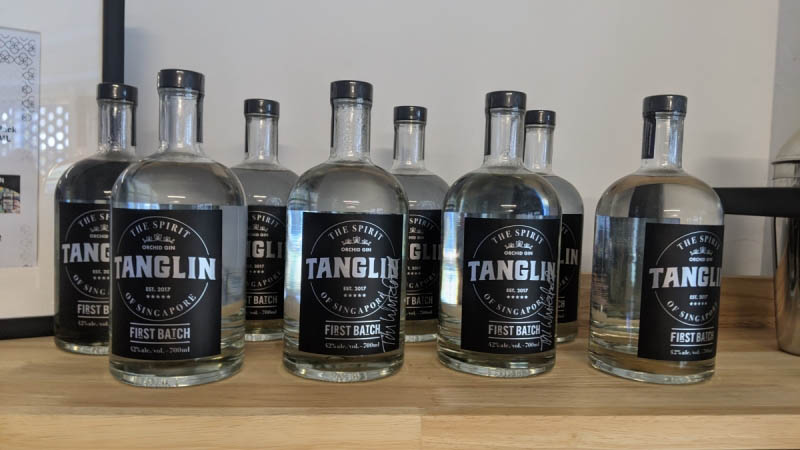FYI-DAY FACTS: Gin!

Here’s an interesting fact: Did you know the vanilla plant is a type of orchid? That’s a new fact I learnt from my friend when I told her I was going for a tour to the Tanglin Gin Distillery.
“It’s one of the reasons why their most famous gin is called the Orchid gin,” she says, as I muse over the fact. “They have two different types of orchids, and they have botanicals in the gin.”
She then proceeds to explain to me about gin: how the two biggest gin ingredients in happen to be juniper berries and coriander seeds, which give it the unique aromatics and flavours that gin has. I am fascinated, and let her explain everything to me about how gin works. It’s really a lovely alcoholic spirit, and versatile, and a favourite amongst bartenders.
The tour at the Tanglin Gin Distillery does not disrupt me from this fact. As Singapore’s first gin distillery, Tanglin Spirits has a lot to stand for. Before the distillery popped up, Singapore did not have a local gin company for close to 68 years. That changed when co-founder Tim Whitefield, along with other founders Andy Hodgson, Chris Box, Charlie van Eeden, came together to create the first incarnation of the gin, making sure of a few things: that it was a truly Asian Gin, and to capture at its core, the Orchid. The name Tanglin Gin was named after the area of Tanglin, the site of Singapore’s first spice plantations and home to the UNESCO World Heritage listed Botanic Gardens.

The distillery used a Gineo still made in Poland, a very modern design made with full stainless steel, using electric elements to heat an oil jacket that produces a perfect uniform indirect heat, with three baskets within the still to input the intense botanical flavours. Ingredients to make the different gins are made using the traditional ingredients of juniper berries and coriander seeds, and other ingredients unique to the distillery such as mandarin orange peel, chilli, and vanilla.
The result is gin with strong botanicals that does well when combined with tonic water, which requires very exact pairing. What was also rather new to me was the fact that tonic waters were different too, and even had different flavours that worked with different gin pairings.
Gin is always a rather fascinating subject, and every aspiring food writer should consider learning about the etymology of the versatile alcoholic spirit, as it works so well with food. Ultimately, in a period where most of us are still adjusting to the new normal, learning about food, whether through baking, cooking, or even bartending for yourself, is one of the best ways to figure out new flavours, new recipes, and even new products. We suggest Tanglin Gin, mixed with Indian Feather tonic water and on the rocks, as an introduction to local gins.
 Here’s an interesting fact: Did you know the vanilla plant is a type of orchid? That’s a new fact I learnt from my friend when I told her I was going for a tour to the Tanglin Gin Distillery.
Here’s an interesting fact: Did you know the vanilla plant is a type of orchid? That’s a new fact I learnt from my friend when I told her I was going for a tour to the Tanglin Gin Distillery.